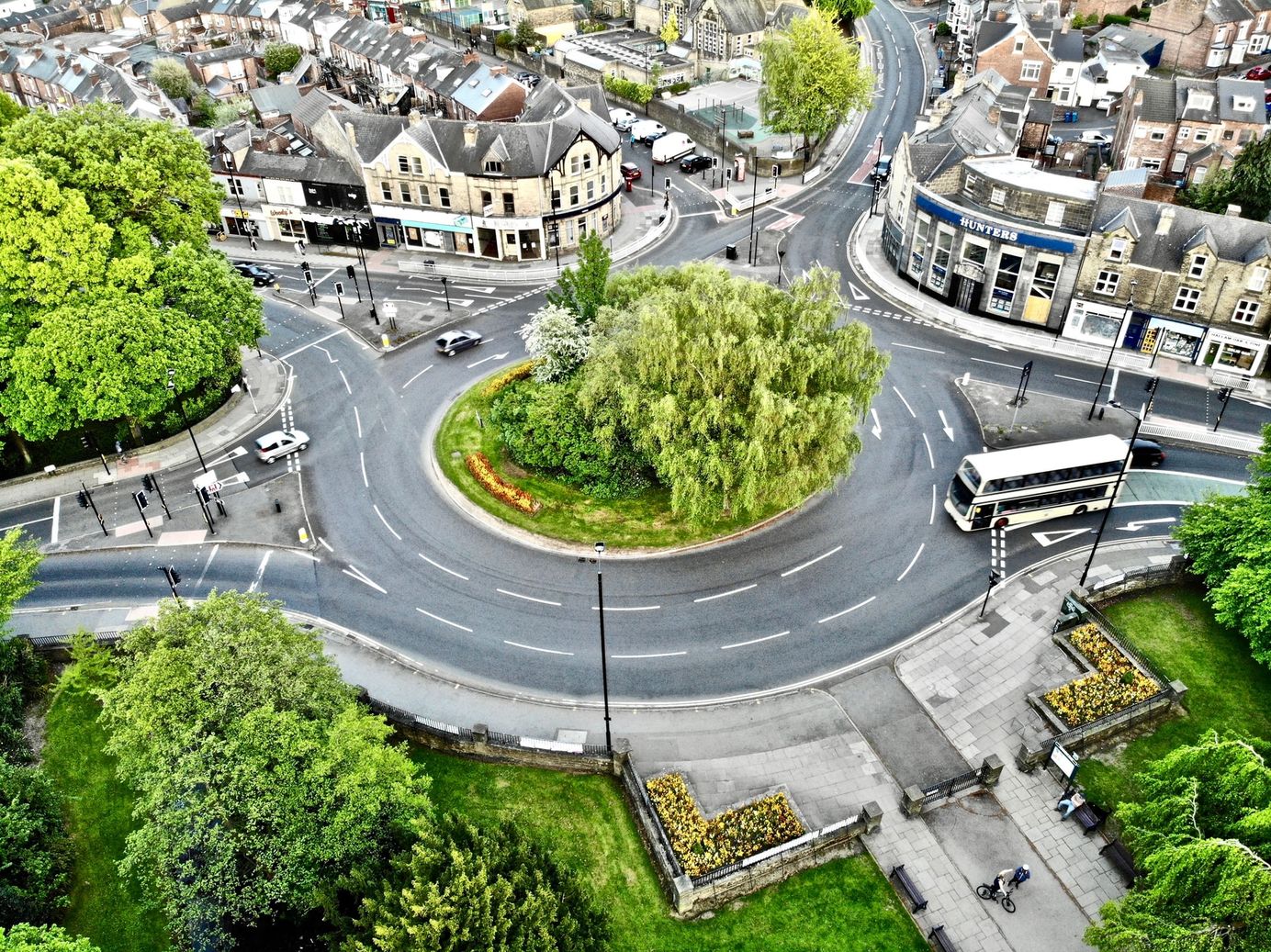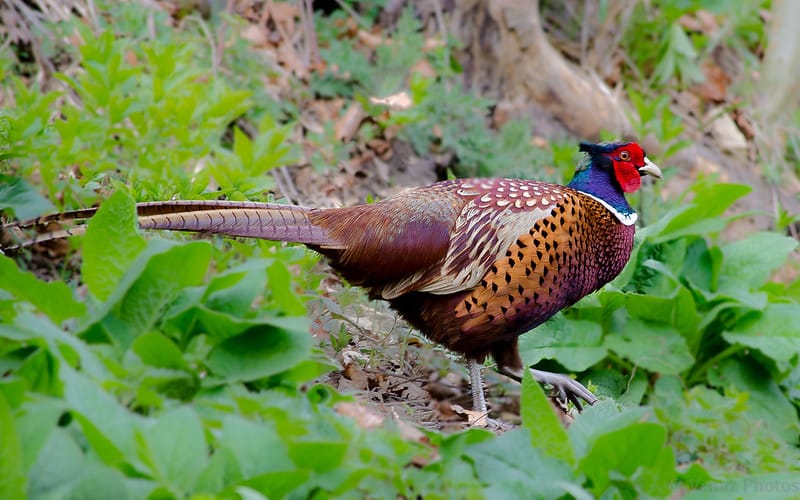
One quarter of English councils have plans to rewild. Does yours?
Exclusive: We asked every council in England about whether they were rewilding – and what they were spending to make it happen. Here's what we found out.
This investigation is the first in a three-part series looking at how local authorities across England are dealing with the nature crisis.
To support our independent journalism, join up as a paying subscriber. This week, members have exclusive access to the full list of responses that we received from councils.
The rewilding movement to date has been driven by private landowners. Old families and new money have transformed their estates, reintroducing lost species and allowing ancient habitats to regenerate.
But what’s the story on public land?
While the government has backed the reintroduction of native species, politicians have generally avoided the topic of rewilding. So far, local government has escaped scrutiny, despite owning hundreds of thousands of acres of land across England. These landholdings span everything from inner-city parks to remote moorlands to old industrial estates.
For the past six months, Inkcap Journal has been investigating the extent to which local councils in England have embraced the concept of rewilding.
We used a combination of interviews and Freedom of Information requests to uncover the plans and intentions of every county council and unitary authority in the country. We wanted to know how councils define rewilding, what they are doing, and what they are spending. This is what we found.
What is rewilding?
Rewilding is a flexible term with no single definition, so we began by asking councils what the word meant to them. While many councils described rewilding as the return to a wilder state, some had a much broader understanding of the term. Many acknowledged that there were various competing interpretations.
The following graphic includes every definition provided. Some have been lightly edited for length; the full responses from councils are available to read here.
A few councils had adopted definitions from external sources, including an academic paper, Rewilding Britain, the dictionary and an article from British Wildlife. Others had composed their own definitions, sometimes explicitly shaped to their local contexts. As Hertfordshire County Council put it: “'Rewilding' in parts of the county will not look the same as 'rewilding' in the Outer Hebrides.”
Islington Council also referenced the flexibility of the concept:
“The term rewilding originally referred to large-scale restoration of ecosystems with the aim of minimal human management so that natural processes shape the landscape and its habitats… Recently, however, the term rewilding has made its way into the public domain as a term that is used to describe any kind of wildlife friendly natural habitat creation, for example creating a wildflower meadow in a park or planting a small area of new woodland.”
Those that provided their own definitions variously referred to “restoring natural processes”, “allowing nature to reclaim a previously managed area” and “protecting natural habitats so that native species can thrive”. Several councils referenced the reintroduction of native species; a few mentioned the return of predators; Harrow was the lone council to bring up wolves (although with no intention of reintroducing them).
A few places – including the councils for the Isle of Wight, Staffordshire and the East Riding of Yorkshire – drew comparisons with traditional conservation measures to differentiate the hands-off nature of rewilding. Wiltshire Council was the only authority to emphasise the return of nature to a previous historical state.
A large number of councils referenced reducing mowing regimes when questioned about their rewilding initiatives; some referred to tree-planting schemes. Brent referred to its seven-mile “bee corridor” as “rewilding in action”. While a more stringent definition of rewilding would probably not include such initiatives, it was clear that many councils have adopted the term 'rewilding' to describe a general relaxation in the management of green space.
Who’s acting?
The majority of councils are not rewilding: around three-quarters of councils said that they had no rewilding policies or initiatives, and had no plans to implement any in the future. However, 40 of 148 councils – 27 percent – had embraced rewilding, either as an existing approach or as a potential idea for the future.
These plans are summarised in this interactive map – click on the county to read about its actions. (To create a meaningful summary of rewilding actions, we have only included those that clearly go beyond traditional conservation initiatives. You can read the councils' full responses here.)
Several councils already have rewilding projects underway. Here is a list of some of the most advanced projects:
- Brighton and Hove City Council is rewilding a 19-acre golf course within the South Downs, including the reintroduction of grazing livestock.
- Coventry City Council is designating council-owned land across the city for rewilding; a post-industrial site in Hawkesbury, adjacent to the canal, will be allowed to colonise naturally.
- Herefordshire Council has set aside £2m to mitigate phosphate in the River Lugg. One potential strategy is to purchase the adjacent farmland as it comes onto the market and rewild it.
- Isle of Wight Council plans to offset at least 10 percent of the island’s baseline carbon emissions through a combination of forestry, planting and rewilding.
- Leicester City Council runs a conservation grazing scheme with longhorn cattle at Aylestone Meadows.
- North Somerset Council plans to rewild as much of its land as possible, following a public consultation held in 2019-20, which will include allowing natural succession to take place on some grassy areas.
- Plymouth City Council is leading a project called Green Minds Plymouth, which is trialling different approaches to rewilding, focusing on involving communities and social enterprises: current projects include beaver reintroductions and urban rewilding.
Other councils said they weren’t currently rewilding but had plans to do so in the future. The fairly large number of councils that fell into this category perhaps reflects the novelty of the idea. Here are some of the places to watch:
- Doncaster Borough Council is likely to include a review of its management regimes for green spaces to allow them to become wilder, with a report forthcoming.
- Hampshire County Council is developing an environmental strategy, which will include consideration of rewilding opportunities across the council’s own estate.
- Kent County Council’s Biodiversity Strategy 2020 notes that a wilding approach to land may be developed, with rewilding possibly contributing towards nature-based solutions.
- Rotherham Borough Council is currently investigating rewilding as a possible future management method.
- Walsall Borough Council is currently developing plans to rewild across a number of sites in 2021-22.
While many councils mentioned tree-planting projects and goals to increase canopy cover, only a handful said that they would encourage the natural regeneration of woodland. This included Bradford City Council, which has a target of increasing woodland cover from 12 to 19 percent, including through natural regeneration "where possible". Solihull Borough Council reported that it plans to create a new ‘Arden Forest’ through a combination of tree-planting and rewilding-based approaches.
Most councils referred only to the terrestrial environment, but a few highlighted their intent to naturalise the courses of their rivers. Historically, many rivers have been artificially straightened, and allowing the channel to resume a more naturally wiggling course can benefit wildlife and reduce flood risk. Councils that mentioned this approach included Harrow, Leicester and Enfield.
Even where councils didn’t have rewilding projects on the go, many confirmed that the concept was part of their general ethos. In particular, councils often pointed to their plans to create Nature Recovery Networks – a vision spearheaded by Natural England and Defra – as an opportunity to trial rewilding-centred conservation.
While most focused on vegetation and wildlife, a few councils also mentioned the impacts that their rewilding efforts would have on people. Greenwich, North Tyneside and Plymouth councils, for instance, focused on the potential for rewilding to reconnect residents with the natural world.
Wiltshire was the only council that mentioned restricting access to areas as they were left to become more wild, in order to improve the habitat for wildlife. And Wirral was alone in openly acknowledging that their rewilding efforts might require some public engagement before they gained acceptance:
"Unfortunately much of the Council’s estate is too fertile to support highly floral and colourful wild flowers, which are only stable communities on impoverished and infertile soils. It is thus expected that this change will have a cosmetic and amenity impact on many public green spaces... Reinterpretation will be required to reconsider these tall tussocky sites from being dull to a worthy vegetation, providing important habitat for invertebrates and small mammals.”
Land ownership
Not all councils are created equal. Some are rural while others are urban; and some own large quantities of land, while others possess relatively little. Since rewilding in its purest form involves landscape-scale restoration, it is worth considering which councils are sitting on the largest landholdings.
Research into council land ownership has thrown up some unexpected results. The list of top ten landowning councils includes large, wealthy councils – like Cambridgeshire and Cornwall – alongside smaller areas and city councils, like Wirral, Sefton and Sheffield.
As writer and campaigner Guy Shrubsole explains in his blog, Who Owns England, the large parcels of land owned by some councils is the result of historical purchases: Sefton, for instance, appears to have purchased a huge expanse of salt marshes and sand dunes along the coastline in the mid-20th century, while Sheffield owns large areas of moorland thanks to the work of land rights campaigners.
The following graph arranges councils by land ownership, with the size of the bubbles representing the area of land in their possession. Hover over the bubbles to see what rewilding actions each council is taking.
The type of land owned by each council is also relevant: an area of moorland, for instance, will be more suited to rewilding than a patch of allotments. The Who Owns England blog has a rough estimate of the amount of land in council ownership according to land type, which we’ve visualised in the chart below (there are some important caveats to these figures in the original analysis).
While councils generally focused on the opportunities to rewild their own estates, some looked beyond these boundaries: Shropshire Council, for instance, has not undertaken any interventions on its public land, but is providing assistance to a new landowner who wanted to revert much of their hundred acres to an approach centred on non-intervention or very extensive grazing.
Urban areas
Councils with mainly urban estates differed in whether they were willing to embrace rewilding, with their attitudes largely determined by how they defined the term. Some, like Tower Hamlets, dismissed the idea out of hand.
“Leaving land unmanaged would rapidly lead to an area of dense bramble or buddleia scrub which would eventually revert to woodland, probably of sycamore or Norway maple. Such habitats would be of negligible amenity value and would be far less biodiverse than sites which are carefully managed for nature conservation. Rewilding might be a valid approach where there are large areas of open land, but it is not suitable in Tower Hamlets.”
Others took a more flexible approach, perhaps best expressed by the Royal Borough of Windsor and Maidenhead:
“Rewilding is a term most often used to describe the concept of allowing natural processes to re-establish on a large landscape scale – usually over thousands of hectares. However, there are always opportunities, even on a small scale, to allow nature to thrive in the absence of intensive management such as mowing or grazing.”
This diversity of perspective was especially apparent in London. While the majority adopted a similar attitude to Tower Hamlets, there were some – particularly on the outskirts – that recognised the opportunity to create wilder areas in their green spaces. Barking and Dagenham Borough Council, for instance, has partnered with SUGi, an international rewilding organisation, to explore ways to introduce rewilding to its parks.
Outside of London, some councils have seized the opportunity to rewild formerly industrial areas. This includes Bradford, which maintains some small parcels of land governed by “self-willed nature” where there is no human management at all.
Funding
Given the dramatic cuts to council funding over the past decade, it is unsurprising that the majority of councils had not set aside any additional money for rewilding projects.
There were a couple of notable exceptions: Brighton has allocated £40,000 to employ a ranger for its rewilded golf course, and Doncaster said that it had set aside £300,000 for “capital resources for the purchase of equipment and other materials”, although it wasn’t clear what these were.
While central government funding remains scarce, some councils are hoping that new legislation could lead to future cash. "We see opportunities coming over the hill with the forthcoming Environment Act and the requirement for mandatory biodiversity net-gain," said Ben Devine from Leicester City Council. "We're definitely starting to think about how rewilding could fit within that requirement, and we're quite excited about that."
Similarly, Herefordshire Council is using the government's New Homes Bonus to tackle phosphate pollution through rewilding agricultural land alongside rivers; Ben Boswell, the council's head of environment, confirmed that the government's Environmental Land Management Scheme (ELMS) may also provide opportunities to make a financial return from rewilding.
A few councils were exploring unconventional sources of funding to support their rewilding efforts. Coventry, Warwickshire and Solihull councils, for instance, all operate a biodiversity offsetting scheme, where developers pay to compensate for nature loss. Coventry (although not Warwickshire or Solihull) has said that it plans to use some of the money raised – some £2.5 million in total – for rewilding projects, although the specific amount was “still subject to further planning”.
Cornwall has also pursued unusual funding opportunities: its Back to the Future fund collects donations from businesses and individuals that are then distributed to local projects tackling the climate emergency, which may include rewilding initiatives.
A couple of councils saw rewilding as an opportunity to reduce spending. According to Wirral council, its budget for grounds expenditure would be “significantly reduced” but added that “the maintenance will be more nuanced and subtle to guide the natural rewilding process.” Somerset council echoed this sentiment: “We are not rewilding to save money – we are doing it to enhance the benefits of our natural environment for our residents and wildlife.”
The future
As the recent elections demonstrated, the balance of power is fragile.
When led by private landowners, rewilding has the benefit of stability; guided by the vision and finances of a single person or family, nature has decades – perhaps centuries – to recover. Politics, on the other hand, operates on four-year cycles, which is good for democracy but less helpful for long-term environmental planning. Are these government-led rewilding efforts built on strong foundations, or will they crumble in the winds of change?
The answer will depend on the council and the initiative. For many councils, rewilding isn't tied to one project or experiment, but is an ethos running through their long-term strategy documents, which are difficult to roll back even when power changes hands. Existing plans are more likely to be maintained if time and money has already been committed.
In any case, so long as rewilding is popular with the public, it is unlikely to be cast aside. Local politicians, unlike private landowners, have a material incentive to ensure that their rewilding plans are well-received: their jobs may literally depend on it.
Nature conservation has cross-party support, and rewilding has powerful allies within the Conservative party. Within local councils, rewilding initiatives have garnered support from both sides of the aisle, perhaps because they tend to be specifically tailored to the locality, with an eye towards the approval of the people who'll use them. Brighton and Hove’s plans to rewild Waterhall golf course, for instance, gained the approval of the Green, Labour and Conservative parties.
The government's recent announcement of a legally-binding target to halt the decline of nature is likely to drive further ambition from councils. It is certainly possible that future funding, unlocked through the Environment Bill and ELMS, could unleash newfound enthusiasm for rewilding at the local level.
It's important to remember that rewilding plans do not capture the entirety of the work that local authorities are doing to protect biodiversity. Many continue to practise traditional management on their land, creating a more vibrant landscape but without necessarily giving nature free rein.
Indeed, the fine line between restoration and rewilding means that some councils may be undertaking rewilding-style interventions without categorising them as such. Even so, the decision to use the term 'rewilding' feels significant, suggesting a willingness to embrace nature in its uncultivated state. Many councils, it seems, are ready to do just that.
With additional reporting by Coreen Grant.

Subscribe to our newsletter
Members receive our premium weekly digest of nature news from across Britain.
Comments
Sign in or become a Inkcap Journal member to join the conversation.
Just enter your email below to get a log in link.








